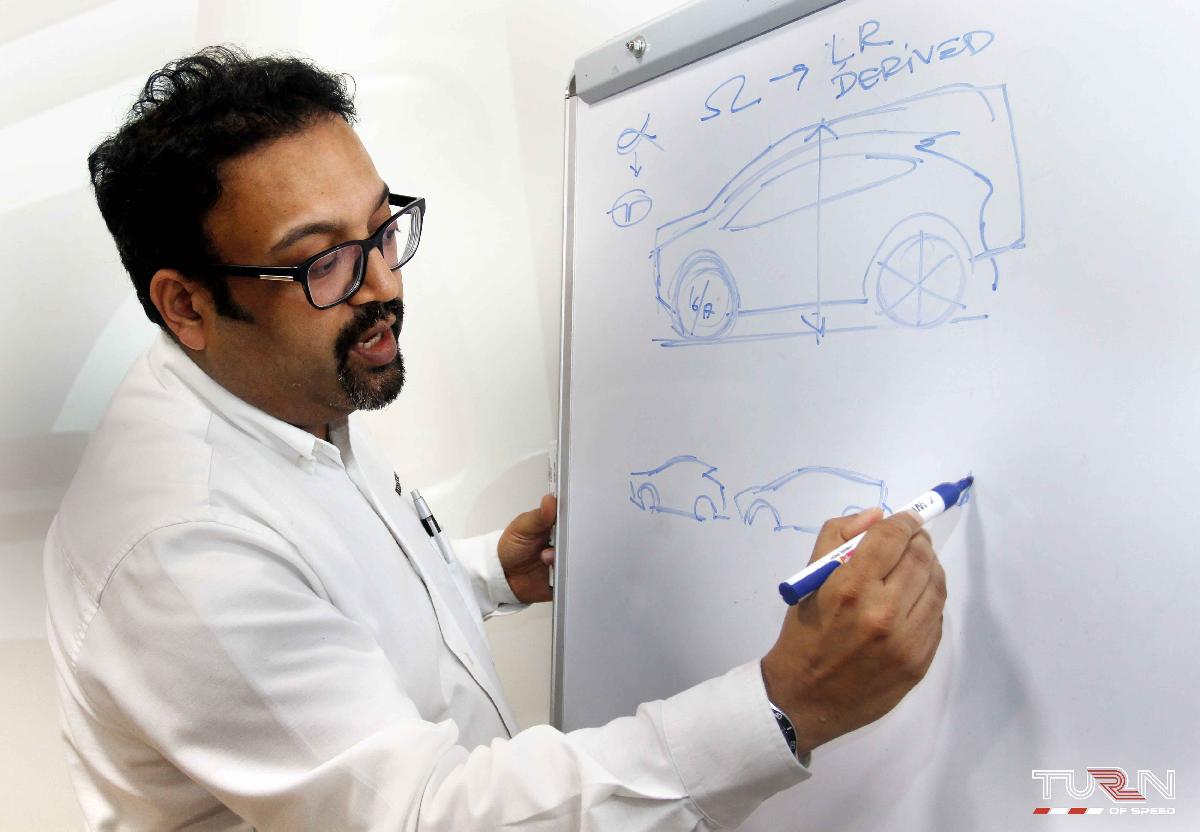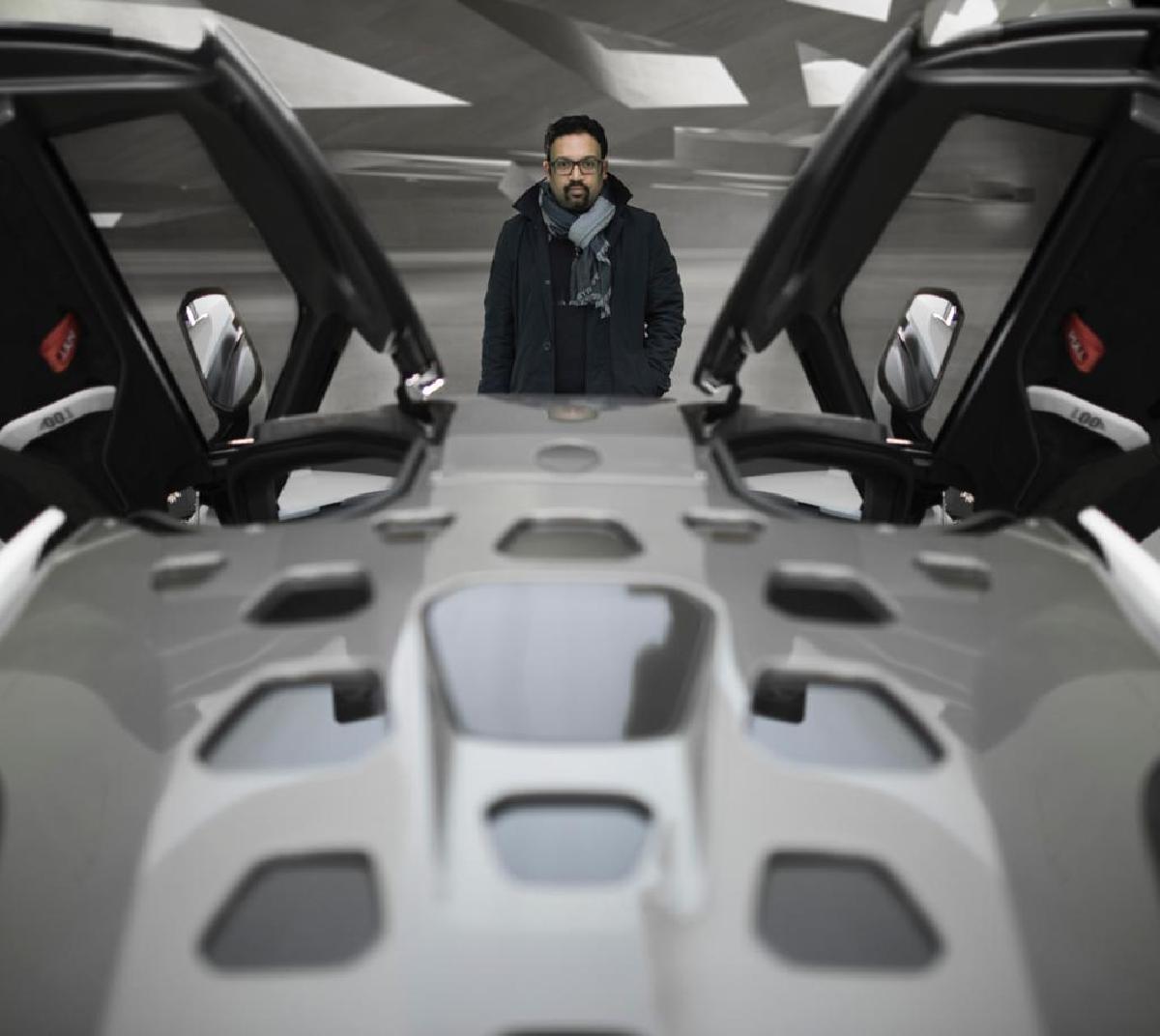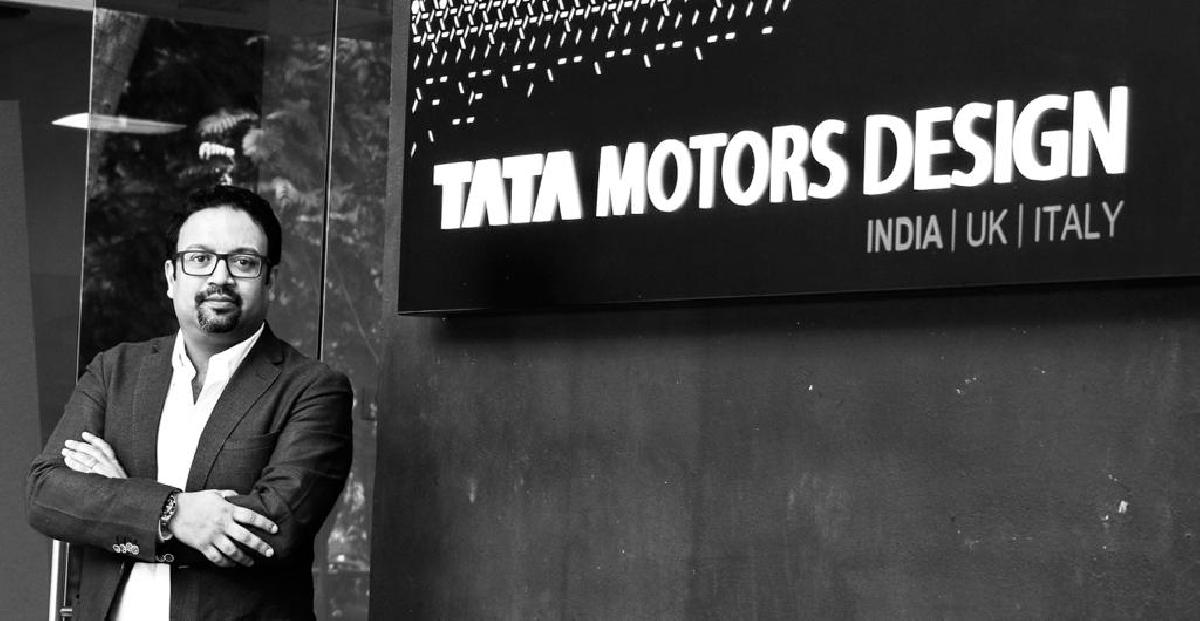
By : RACHNA TYAGI
MUMBAI :
Bose considers himself a lucky man to be at Tata Motors, when the architecture of their cars was being defined. According to him, a lot depends on knowing right at the beginning of the project whether the product is going to be a hatchback, a sedan, a mini-van or an SUV and to be able to figure out how many things one can do based on the architecture. What that involves is knowing, where the wheels come, what the wheelbase will be, what the vision angle is – from where the person is sitting, and many such finer aspects, all of which go into defining the architecture of the car. “You get any of this wrong and you’ve had it! You’re stuck with it for the next 14-15 years! Because one architecture gives you at least two generations of products – seven years, seven years. So, If I make an architecture in 2020, I’m not changing it until 2035, and so, you have got to know, that in this time, if maybe, gasoline disappears totally, where do the batteries go? You have to, in the architecture, already plan the place for it, so that when the batteries become a certain size, a certain price, a certain configuration, this is where they will go. It is according to this that the production line and the engine sizes get planned, because the hood has to be at a certain height for pedestrian impact, so all that has to be planned from day one. The more future-proof this architecture is the better chance you have to do these 14 years for the longevity of the platform because you don’t even know what is coming,” explains Bose.
He then goes on to explain how ‘architecture’ and ‘styling’ differ. “Architecture is like bones, we all have a different bone structure, and styling is basically the clothes that you put on,” says Bose. To illustrate this point further, Bose says that if he had a wheel which was even one inch smaller and was asked to make a tough-looking SUV, it wouldn’t be possible. “Not happening, you can do what you want. If you don’t have it inherently in the car, inherently in the architecture, you can do all the styling you want; but it won’t help. That is when people start doing lines and trying to disguise what is basically wrong with the car. One must be really lucky to get into a company at this point, to be able to influence this,” he says.

Bose then goes on to enlighten us about the design scene in India and talks about where India stands globally, vis-à-vis design. He says that that while India is starting to learn how to manufacture cars and that there is already a ‘Make in India,’ in place, the need of the hour, is a ‘Conceived in India’ and a ‘Designed in India’ as well.” According to him, Chinese companies have invested huge amounts of money in not just manufacturing, but also in learning the creation and design of products. “Look at the mobile phone world, look at anything today, they’ve got five-six Global brands, we don’t have a single global brand from India. We don’t have an IKEA, an Oppo, or a Xiaomi, we don’t have a single global household name brand today, which three quarters of the world knows and uses in their day-to-day life. TCS is a global brand, but it is a very B2B Global brand, in that sense. We have only two Indian car manufacturers, whereas, China has 50-80, if not more, so, there is a huge difference. The OEMs (Original Equipment Manufacturers) that come from overseas are still in the ‘Manufacture in India’ mode, very few are in the ‘Design in India,’ mode and this is a vicious cycle,” says Bose.
When Bose asks OEM people from overseas about their reasons for not establishing studios in India, despite knowing that it is competition for him, they tell him about their difficulties in terms of not finding the right people, not finding clay modelers, and even not finding the lifestyle which is why they often shy away from investing. “Most will always be in the ‘manufacture’ frame of mind, but if you have been around in the country for 15-20 years, I think more global OEMs should invest in ‘Design in India’ as well, because otherwise the profession won’t grow, it is as simple as that,” says Bose.
As compared to the time of Bose’s graduation, when there were no design colleges for cars or for automotive, today, there are a handful of them, and he sees a high level of talent coming out of there. “Talent is as good as any place in the world, but it is raw and it needs to be honed, but where does it go, who do they apply to in India? If you have 100-120 automotive design graduates every year there are certainly not 120 jobs being created every year, I can guarantee you this,” says Bose. That is the reason he advocates for investing in Design, in India, at every opportunity he gets, because he realizes how important it is for the ecosystem to grow. “We’ll be having this conversation in twenty years, and it will still be us and Mahindra,” says Bose, who wishes to see overseas OEMs accelerating investment into automotive design in India.
While there may not be many design studios in India designing for automotive, there are a few people who are of the opinion that when Indian designers do get work, they end up getting a raw deal and are often told to design only small auto parts such as tail lamps and mirrors. “You’ve got to start somewhere,” says Bose. “I started by doing wheel caps, door handles and ORVMs (Outside Rear View Mirrors), then you graduate on to a bumper, then, you may get a car. You always start as a junior designer. I don’t think there should be any issue with that. I guarantee you, if a fresher from college, is given the job of designing a production car, he will really struggle, so, it is better to actually learn through the process,” he says.
Patience is a virtue that people need to have while learning along the process because even a mirror can be a very important thing explains Bose. “Just the ORVM… you know how many systems it has? First it has to show you three lanes, then it can have power fold, so it has a motor, then it can have a projection of a logo, so, it has to have some lighting and a lens, then it has to have the indicator in that, that’s the fourth system. Then, they have over take warning indicator, so there’s a sensor there. A mirror, just an ORVM, can have six-seven different technical systems, that you have to integrate, so it is not just something to look at the back, there’s a lot more than that. So, start with that. The raw deal might be that beyond that they can’t get to, in India, because companies aren’t investing to do full models, very few companies are doing it. So, maybe they’re right at that level which is why it is also the responsibility of an industry to develop the talent for that industry,” says Bose.

Bose sees a big hope in the Start-up world because he feels many there, have taken a real leap and are doing great design work. He is very happy that a non-OEM path is also developing and thinks that while that could well be an avenue for some of our designers to go and explore, and though for some time, it would be limited to two wheelers because “the quantum of investment from a two-wheeler to a four wheeler is of a factor which many start-ups won’t be able to afford,” he says “Maybe one day it will go to cars, who knows?”
We asked Bose about the contemporary designers whose work he admires, and we learnt that there were quite a few. “I think Gorden Wagener is doing a very good job in Mercedes, he has really lifted the game. Land Rover stands out, Massimo Frascella and his team there, led by Gerry McGovern, they’re doing some excellent work in SUV design. To have a range of SUVs, each one different, is quite difficult, actually, if you think about it,” says Bose. He explains how most companies have hatchbacks, sedans and mini vans but the fact that these guys only do SUVs isn’t easy. “To do a range of SUVs where each one has a character which is different from the other is very credible and the design quality level is extremely high,” says Bose. He also believes that some Chinese companies are doing significant work in design. “Definitely, the Geely group, very quickly they’ve reached a level of maturity. They have Peter Hobury, who came from Volvo, and heads Design there, but that apart, Geely, has some very mature products and very mature design. That is something I admire. I have a lot of respect for what they’ve managed to do, in the time they’ve managed to do it as well. I think, they will become as good as anyone in the world, so, that is something I watch out for,” says Bose.
And where does Bose draw inspiration from? “Architecture and product design are two areas that are closest to automotive in that sense but there’s lots going on in fashion and in art and luckily, we have three global locations, so when you visit, you get a chance to immerse yourself in some of these things that are going on. So, if you go to Turin there’s a beautiful museum there, you see works from [Giorgetto] Giugiaro or you see works from [Marcello] Gandini, the next trip you see painting and sculpture from someone else, same in the UK, same here [India]. When I go to Bombay, I walk around Kala Ghoda, a lot, I love that area, there is so much going on, the buzz, so, I look at lots of things, but car design now,” says Bose, emphasizing that it is not a conscious effort, it has just become like that.

Every year, Bose and his team, go on a trip known as “Design Immersion” where they’re taken into the belly of a city. “We’ve done London, Bombay, Turin, so we try moving around. It gives them a chance to see what is coming. I remember four-five years ago we showed them shared offices in London. All of them said yeah, but this is London, don’t worry, it won’t ever happen in India …. And what happened exactly two years later? Shared offices! The year after that, we took them to shared housing, shared homes for professionals, buildings…. They said…oh no, this won’t come to India! Boom! Sure enough, it came to India,” he says.
Another important change that Bose points towards is, in people’s attitude, in terms of sharing things, which he says is very different from our parents’ times. “Tomorrow ten of us may get together and buy a car and share the rest of the expenses, we’ll have an app amongst us to decide who wants to use it when. That is nine cars you haven’t sold! So, how do you make a business opportunity of that change in attitude,” asks Bose, emphasizing on the need to be able to see ahead. As head of design of any company, it is vital feels Bose, that they have a clear view of the bigger picture, afterall, “it gives you a clue as to how society is thinking about design in general,” says the design maestro.
